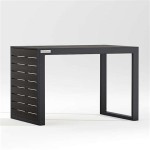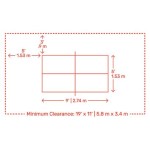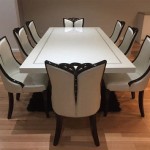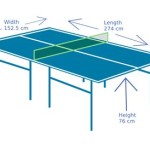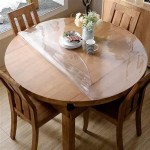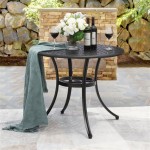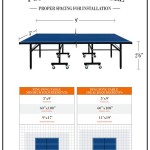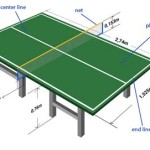Wood Slab Dining Table Supplier in Malaysia: A Comprehensive Guide
Malaysia, with its rich rainforests and skilled craftsmanship, has emerged as a notable supplier of wood slab dining tables. These tables, prized for their unique character and natural beauty, offer a distinct aesthetic that appeals to homeowners and businesses alike. Understanding the Malaysian wood slab dining table market requires an examination of sourcing, processing, wood types, quality considerations, and supplier selection.
The allure of wood slab dining tables stems from their organic form. Each slab retains the natural edges and grain patterns of the original tree, resulting in a one-of-a-kind piece of furniture. The tables are not only functional dining surfaces but also serve as conversation starters and artistic focal points within a space. Consequently, demand for these tables has been steadily increasing, both domestically and internationally.
This article aims to provide a thorough overview of the wood slab dining table supply chain in Malaysia, focusing on key aspects that prospective buyers should consider when sourcing these distinctive furnishings.
Key Point 1: Sourcing and Processing of Wood Slabs in Malaysia
The availability of wood slabs in Malaysia is directly linked to the country’s forestry practices and the species of trees that thrive within its ecosystems. Sustainable sourcing is a paramount concern, and reputable suppliers prioritize responsible harvesting practices to minimize environmental impact. This often involves obtaining certifications such as the Forest Stewardship Council (FSC) to guarantee that the wood comes from well-managed forests.
The process of transforming a raw tree trunk into a usable wood slab dining table involves several crucial steps, starting with the felling of the tree. Once harvested, the log is typically transported to a sawmill where it is carefully sawn into slabs. The sawing method is critical as it determines the grain pattern and overall aesthetic of the final product. Different sawing techniques, such as live edge sawing (also known as through-and-through sawing), yield slabs with the natural edge intact, while other methods produce more uniform cuts.
After sawing, the slabs undergo a drying process to reduce their moisture content, preventing warping, cracking, and other forms of damage. Kiln drying is the most common method, involving the controlled heating of the wood to remove moisture. The length and temperature of the kiln drying process are carefully calibrated based on the species of wood and the desired moisture content.
Once dried, the slabs are often planed and sanded to create a smooth, even surface. This stage prepares the wood for finishing and ensures that the dining table is comfortable to use. Any imperfections, such as knots or cracks, may be filled with epoxy resin to enhance the structural integrity and visual appeal of the slab.
Finally, the wood slab is finished with a protective coating, such as varnish, lacquer, or oil, to enhance its durability and resistance to scratches, stains, and water damage. The choice of finish depends on the desired aesthetic and the level of protection required.
Key Point 2: Popular Wood Types Used for Dining Tables in Malaysia
Malaysia boasts a diverse range of hardwood species suitable for crafting wood slab dining tables. Each species possesses unique characteristics in terms of color, grain pattern, density, and durability. Some of the most popular wood types include:
Rain Tree (Albizia saman): Also known as Suar wood, Rain Tree is a widely used option due to its rapid growth and availability. It features a distinctive grain pattern with contrasting light and dark tones, making it visually appealing. Rain Tree is relatively soft compared to other hardwoods, but it is still durable enough for dining table use, especially with proper finishing.
Acacia (Acacia mangium): Acacia wood is known for its hardness and resistance to wear and tear. It has a warm, golden-brown color and a straight or slightly wavy grain pattern. Acacia is a sustainable choice as it is often sourced from plantations.
Rubberwood (Hevea brasiliensis): Rubberwood is an ecologically friendly option that is sourced from rubber tree plantations after the trees have ceased producing latex. It is a medium-density hardwood with a light color and a smooth, even grain. Rubberwood is often stained to achieve different color tones.
Merbau (Intsia palembanica): Merbau is a durable and naturally resistant to decay and insects. Its dark reddish-brown color and interlocking grain make it a highly sought-after choice for high-end dining tables. Merbau is generally more expensive than Rain Tree or Acacia.
Teak (Tectona grandis): Teak is renowned for its exceptional durability, water resistance, and beautiful golden-brown color. While not as commonly sourced within Malaysia as the other mentioned wood types, it is imported and used for premium dining tables. Teak requires minimal maintenance and can last for generations.
Balau (Shorea spp.): Balau is a dense and durable hardwood that is often used for outdoor furniture due to its resistance to decay and insects. It has a reddish-brown color and a straight or slightly interlocked grain. While typically used outdoors, Balau can also be used for dining tables, lending a rustic and robust quality.
Selecting the appropriate wood type depends on the desired aesthetic, budget, and level of durability required.
Key Point 3: Quality Considerations and Supplier Selection
Ensuring the quality of a wood slab dining table requires careful attention to detail at every stage of the production process. Buyers should consider the following factors when evaluating the quality of a table:
Wood Moisture Content: The wood slab should be properly dried to a moisture content of around 8-12% to prevent warping and cracking. Buyers can request a moisture meter reading to verify the moisture content before purchase.
Surface Finish: The finish should be smooth, even, and free of imperfections. The type of finish should be appropriate for the intended use and should provide adequate protection against scratches, stains, and water damage.
Structural Integrity: The slab should be free of major cracks or defects that could compromise its structural integrity. Any filled cracks or knots should be properly repaired with epoxy resin to ensure that the table is stable and durable.
Leg Design and Attachment: The legs should be sturdy and well-attached to the slab. The design of the legs should complement the style of the table and provide adequate support. Common leg materials include steel, wood, and concrete.
Slab Thickness: The thickness of the wood slab will impact the table's overall stability and aesthetic. A thicker slab generally provides a more substantial and luxurious look. The ideal thickness will depend on the size of the table and the type of wood used.
Selecting a reputable supplier is crucial to ensuring the quality and sustainability of the wood slab dining table. Buyers should look for suppliers who:
Have a Proven Track Record: Check online reviews and ask for references from previous customers to assess the supplier's reputation. Look for suppliers with a history of delivering high-quality products and providing excellent customer service.
Offer Sustainable Sourcing Practices: Inquire about the supplier's sourcing practices and certifications. Choose suppliers who prioritize sustainable harvesting and environmentally responsible manufacturing processes.
Provide Detailed Product Information: The supplier should be able to provide detailed information about the wood type, dimensions, moisture content, finish, and construction of the table. Transparency is key to establishing trust and ensuring that the buyer is making an informed decision.
Offer Customization Options: Some suppliers offer customization options, allowing buyers to select the size, shape, and finish of the table. This can be a valuable option for those seeking a truly unique piece of furniture.
Provide Warranty and Support: A reputable supplier will offer a warranty to protect against defects in materials and workmanship. They should also be readily available to provide support and answer any questions that the buyer may have.
By carefully considering these factors, buyers can navigate the Malaysian wood slab dining table market and select a high-quality, sustainable, and visually stunning piece of furniture that will enhance their dining space for years to come. The inherent beauty and unique character of these tables make them a valuable addition to any home or commercial setting.

Art Of Tree Leading Solid Wood Furniture Manufacturer Malaysia

Art Of Tree Leading Solid Wood Furniture Manufacturer Malaysia

Wood Slab Leading Supplier Malaysia

Premium Teak Wood Dining Table Horestco Furniture

Art Of Tree Leading Solid Wood Furniture Manufacturer Malaysia

Wood Slab Table

Wood Slab Leading Supplier Malaysia

Live Edge Dining Table Reclaimed Acacia Wood Solid Slab Shape 8 Ft Length Custom Made

Wood Slab Table
Malaysia Natural Wood Slab Supplier

